Following in the audio footsteps of the Pro-Ject Debut Carbon Evo, the Evo 2 continues the company’s journey into the realm of mid-priced turntables that sound like more expensive gear. In addition to an exceptionally isolated deck, belt-drive, tonearm, aluminum platter and feet, the Evo 2 delivers high-quality audio with a minimum of extraneous vibrations through its custom-designed moving magnet cartridge, and ranks among the best turntables you can buy today.
While it’s able to pick up the subtlety and majesty of vinyl without breaking the bank, the Evo 2 is not for those seeking a record player with a USB port, Bluetooth, or automatic operation. This is a purely analog manual turntable that requires a phono stage preamp or a receiver for playing and a little patience to use.
Available in 10 colors, the Evo 2’s $700 price tag might seem high but it spins and plays records like a turntable costing much more.
Pro-Ject Debut Evo 2 review: Price and availability
Pro-Ject Evo 2: Specs
Price: $699/£599/AU$1079
Colors: High-gloss black, white and red; satin black, red, green, yellow, blue, white; and walnut veneer
Outputs: RCA with ground wire
Drive: Belt drive
Pitch control: Electronic
Platter: Die-cast aluminum
Cartridge: Pick It MM Evo
Dimensions: 16.3 x 12.6 x 4.5 inches
Weight: 13.2 pounds
For sale in a variety of places online, the Pro-Ject Debut Evo 2 turntable with its Pick It MM Evo cartridge costs $699, $100 more than its predecessor, the Debut Carbon Evo. That puts in good company of the likes of Rega, Cambridge Audio, and other mid-range turntable options.
The Evo 2 is available in three high gloss finishes, six satin ones, and walnut veneer. It includes a two-year warranty, although the cartridge and needle are only covered for a year.
Pro-Ject Evo 2 review: Design
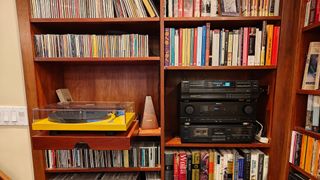
Designed in Austria and manufactured in the Czech Republic, the Debut Evo 2 is a European affair — apart from its Chinese AC adapter. The turntable is available in an astounding variety of colors, from the three high-gloss finishes (red, black and white) to its six satin surfaces (black, red, green, yellow, blue and white) to walnut veneer. I looked at the satin yellow version which went well with my cherry furniture.
Built around its Medium Density Fiberboard (MDF) plinth, the Evo 2 has the minimalist look of a modern sculpture with no visible buttons or keys. There is a hidden rocker switch underneath for starting the platter and choosing 33 or 45 rpm. It includes a 45 rpm spindle for old-school singles, and a rear hinged clear plastic dust cover.
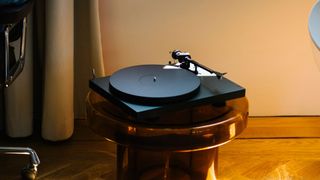
The Evo 2 has reduced vibrations at every stage, starting with its three dampened feet that isolate the deck and platter. Using three feet makes leveling easier and transmits fewer vibrations, but the whole turntable can be tipped if pressed too hard at either rear corner. I prefer the solidity of a four-foot design, like NAD’s C588.
At 16.3 x 12.6 x 4.5 inches, the Evo 2 is smaller than other turntables. It does need an extra 3 inches in the back to open the dust cover, however. The system’s belt drive lacks a strobe and manual pitch control but its decoupled AC motor is isolated and electronically locks in the platter’s speed with a rated variance of less than 0.4 percent at 33 rpm.
The 3.8-pound die-cast aluminum platter replaces the steel one on the original Evo turntable. Its stainless steel shaft sits in a robust bronze bushing for rotational stability. Happily, it also comes with a felt mat.
Its straight carbon fiber tonearm weighs 10 grams, has an overhang of 18.5 millimeters and its single-piece design is exceptionally rigid. It features a low-resonance design that’s matched by the turntable’s machined aluminum bearing block and low-friction bearings — TLDR, it runs smoothly with no stuttering or issues from friction from the motor. The turntable’s offset hanging bob weight adjusts its tracking to prevent the needle from skipping across the disc — otherwise known as skating. More expensive turntables, like Music Hall’s $1,200 MMF-5.3SE record player, also use this time-honored technique.
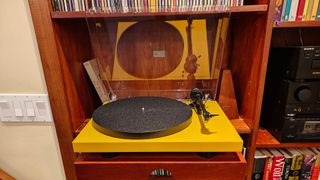
Instead of the ubiquitous Ortofon 2M Red cartridge, Pro-Ject engineers worked with Ortofon to create the Pick It MM Evo cartridge. With split pole pins to reduce signal loss, it has a flat frequency response from 20 to 20,000 hertz and works well with a tracking force of 1.6 to 2.0 grams. It sells for $150 on its own with an elliptical needle.
It all adds up to the Evo 2’s wow and flutter rating for the Evo 2 of 0.14 percent, according to Pro-Ject. This is well below what most humans can hear and comparable to the NAD C588’s 0.12 percent. On the other hand, the NAD turntable costs $300 more.
Pro-Ject Debut Evo 2 review: Connectivity and setup
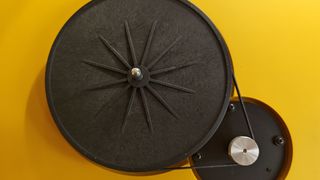
Purely analog, the Evo 2 lacks a USB port for a computer connection or Bluetooth for wireless headphones or speakers — something other comparably priced turntables feature. Its gold-plated RCA plugs allow connecting the Evo 2 to a phono stage pre-amp or plugging into a stereo receiver. The included 4-foot grounded Connect It cable with oxygen-free copper wires and foil shielding usually sells for $60.
Happily, the Evo 2 comes nearly fully built and took only 5 minutes to start playing DJ. Unlike the Music Hall MMF-5.3SE, there’s no integrated bubble level, so I used my own to get it completely flat. It was surprisingly easy to install the drive belt, something I can’t say about other turntables.
The tonearm comes mounted with the cartridge and needle pre-installed; just remove the cover and away you go. After I put the platter in place and installed the counterweight, I fine-tuned its downward force with my Ortofon balancing scale. The hanging bob anti-skate technique is effective but a little crude with three settings; I chose the middle one.
I plugged in the AC adapter and connected the EVO 2’s audio cable to my preamp, PreSonus Eris 3.5 Media Reference Monitors, and Eris Sub 8BT subwoofer. I was ready to start my listening journey.
Pro-Ject Evo 2 review: Sound quality
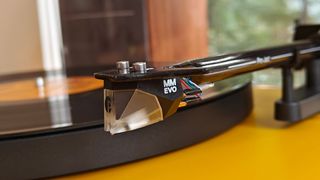
When the platter starts spinning, the motor’s audible groan is disconcerting but the turntable quickly settles down. All manual, the Evo 2 is not for those who want the turntable to place the needle on the record, remove it, or even shut the motor off when the disc is done. Its mechanical tonearm lever is all there is. In fact, after falling asleep while listening to Pat Metheny’s Two Folk Songs, I awoke to the familiar sound of “fft, fft, fft” — the needle circling the record’s run-out section.
Hum-free across a range of records, I started with The Mighty Quinn (Quinn, the Eskimo) from Bob Dylan’s Greatest Hits Vol. II. The turntable delivered an exceptionally bright, crisp, and lively audio environment with extended high frequencies that I’m not sure I noticed before. On the other hand, it sounded hollow at times, lacking strong mid-range tones.
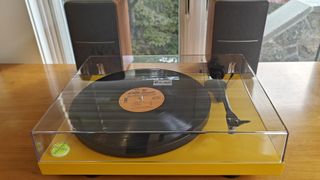
Switching to my Sherwood receiver and Acoustic Research speakers for Bruce Springsteen’s Nebraska, Pro-Ject’s isolation efforts shined through with Bruce’s raspy voice coming through loud and clear even when it’s no louder than a whisper. The mix of light guitar work and his voice came through as a well-mixed sonic whole.
Over three weeks, I listened to dozens of discs, including the 1967 release of Arturo Tuscanini conducting the NBC Orchestra’s rendition of Antonin Dvořák’s Symphony No. 9, From the New World. The cartridge’s channel separation and range were shown ably from the recording’s soaring Adagio opening to the intensity of the closing Scherzo with the brass section layered over the strings. It was like an orchestral wall of sound.
Pro-Ject Evo 2: Verdict

Whether you’re an unrepentant vinyl junkie or discovering the magic of records, Pro-Ject’s Evo 2 is a moderately priced turntable with many of the attributes, specs and audio abilities of turntables selling for hundreds more. The Evo 2’s excellent vibration isolation and new moving magnet cartridge can create a realistic audio landscape that was just as good at folk and rock albums as with classical and jazz discs.
Available in 10 finishes, the Evo 2 is easy to put together and get going, although its manual operation might be a frustration for some and a turn-off to others. Sure, it all-analog design lacks digital add-ons like USB and Bluetooth but at $700, the Evo 2 is hard to beat.
More from Tom's Guide
- 7 biggest announcements at The Game Awards 2024 — Elden Ring: Nightreign, The Witcher 4, Naughty Dog's new game and more
- Amazon's 'The List' sale just launched — here's 21 holiday deals I'd buy now on Stanley, Beats, Lego and more from $10
- ChatGPT Projects announced — and it's one of the most important AI releases this year

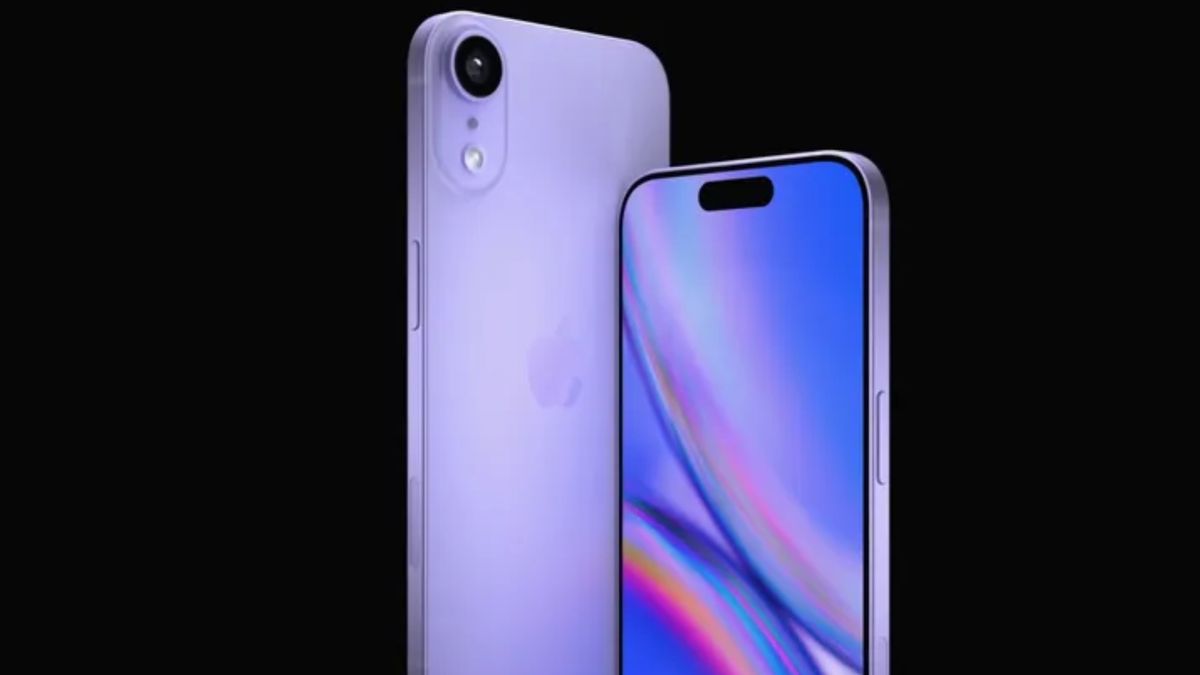

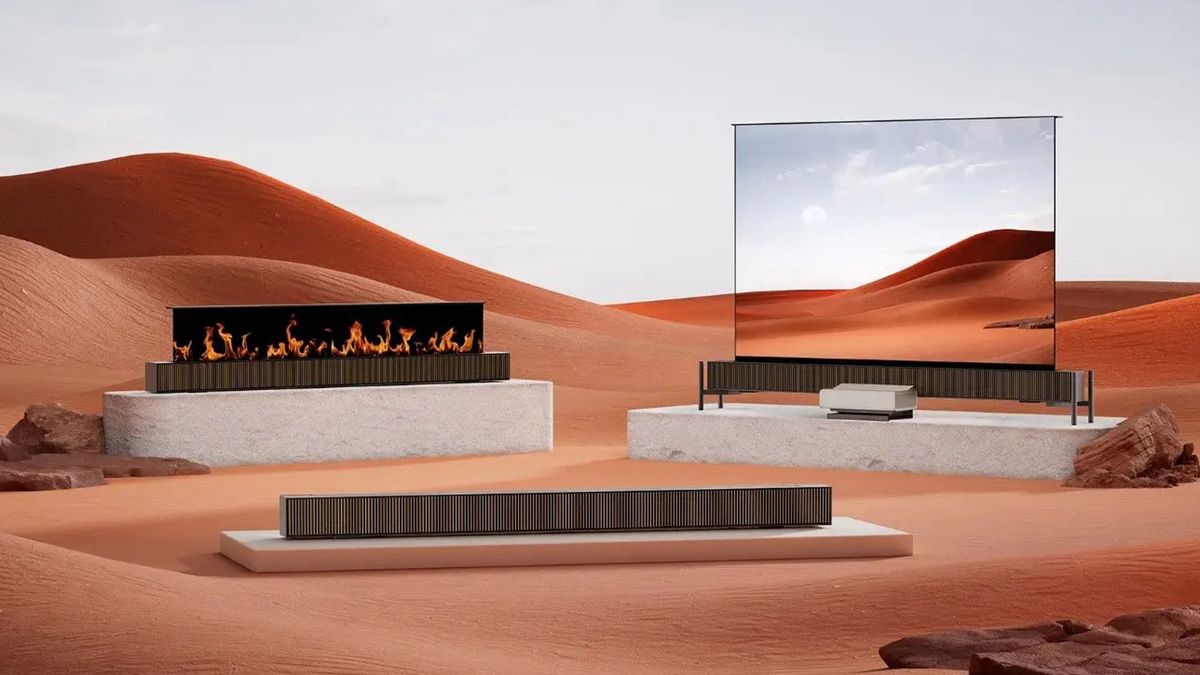
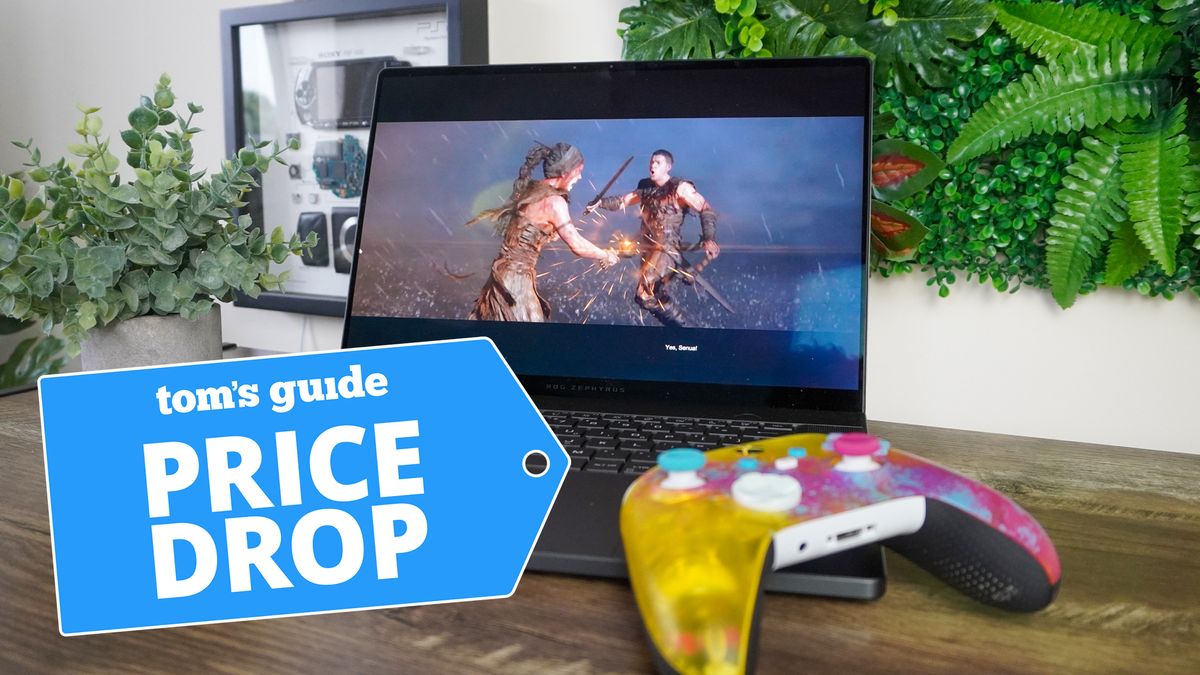
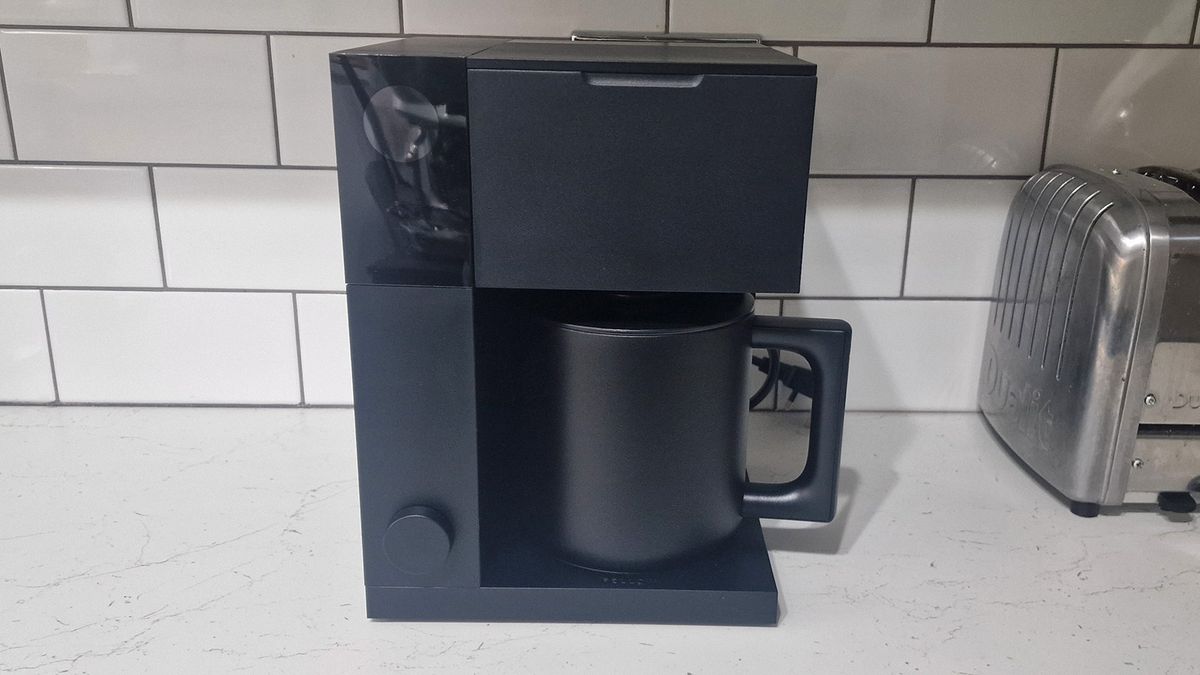


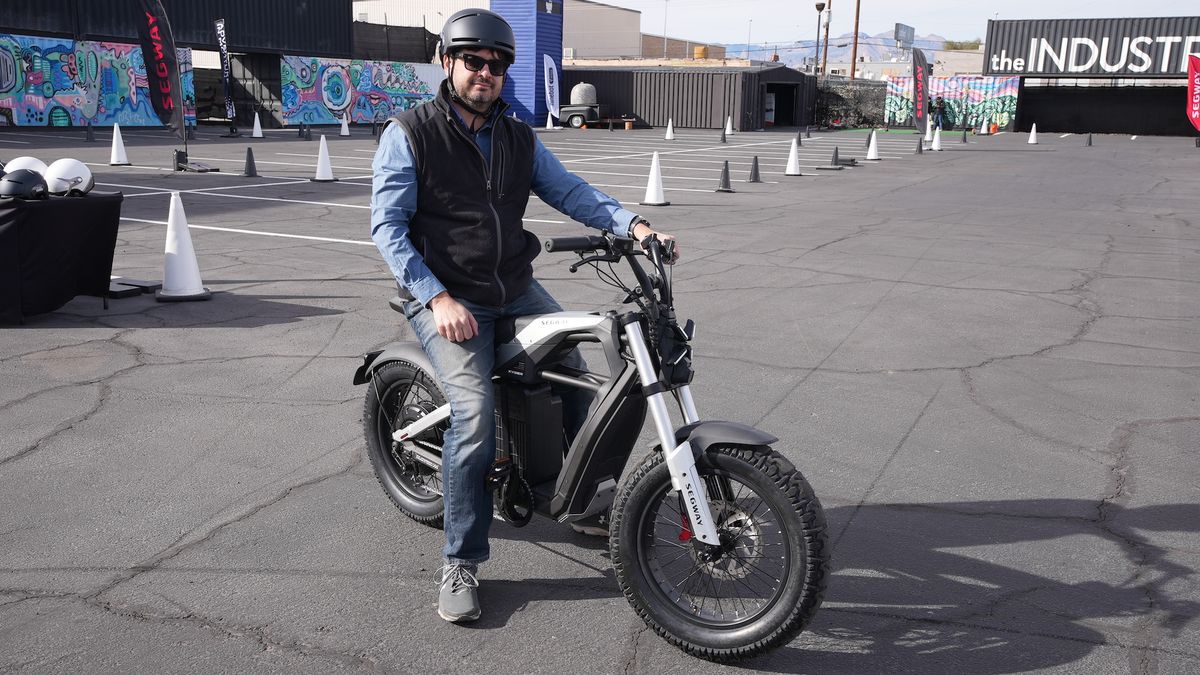












 English (US) ·
English (US) ·